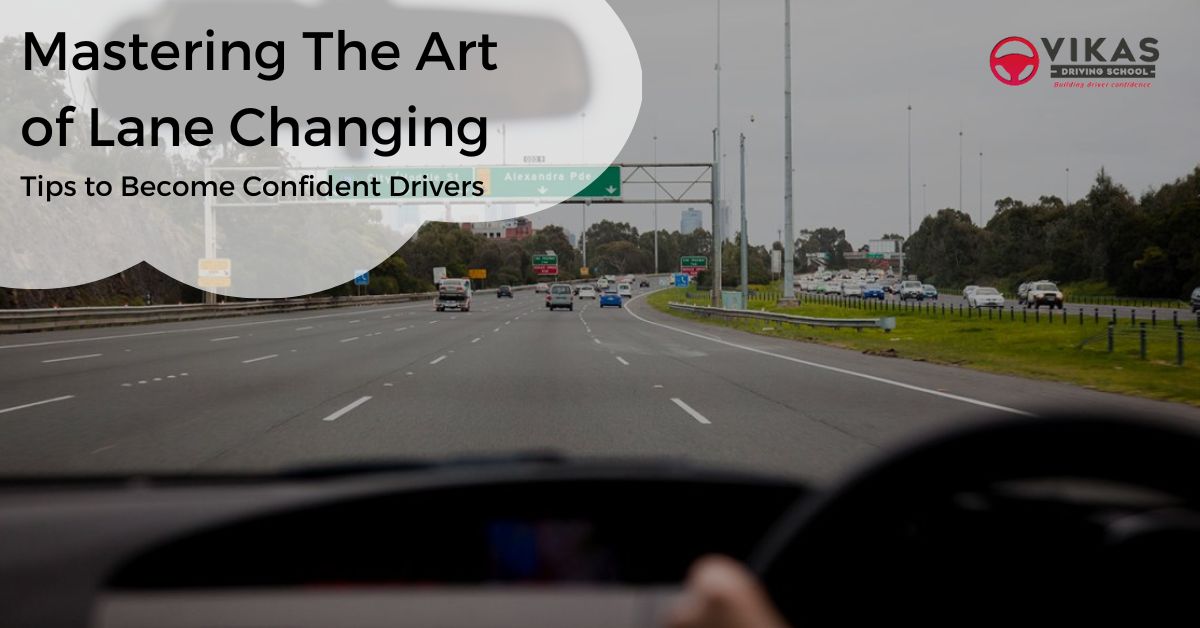Lane changing is a fundamental skill that every driver should master. It allows you to navigate safely and efficiently through traffic, ensuring a smooth and confident driving experience. In this comprehensive guide, tailored specifically for drivers in the Melbourne region of Australia, we will explore the tips, strategies, and latest traffic rules to help you become a skilled lane changer. Whether you are a new driver or looking to enhance your existing skills, this blog will provide valuable insights to make your lane changes seamless and safe.
Understanding Lane Changing Rules and Regulations in Melbourne:
Before diving into lane-changing techniques, it is crucial to understand the relevant traffic laws and regulations in the Melbourne region. Familiarize yourself with the rules regarding indicators, blind spots, and speed limits. Always adhere to these regulations to ensure compliance and promote road safety.
Importance of Proper Observation and Awareness:
Maintaining situational awareness is essential when changing lanes. Always check your mirrors and be mindful of your blind spots. Utilize your indicators effectively to communicate your intentions to other drivers on the road. By practicing proper observation and awareness, you can reduce the risk of collisions during lane changes.
Timing and Signalization for Lane Changes:
Timing your lane changes appropriately is key to smooth transitions. Plan ahead and ensure that there is sufficient space and time to move into the desired lane. Use your indicators to signal your intention to change lanes. Give other drivers ample notice, allowing them to adjust their speed and position accordingly.
Identifying and Managing Blind Spots:
Blind spots are areas around your vehicle that are not visible in your mirrors. It is crucial to identify and manage blind spots effectively when changing lanes. Always check over your shoulder to ensure there are no vehicles in your blind spots before initiating a lane change. This simple habit can prevent potentially dangerous situations on the road.
Adjusting Speed and Positioning:
Adapting your speed and positioning is crucial when changing lanes. Match your speed to that of the traffic in the lane you wish to enter. Maintain a safe following distance from the vehicle ahead and avoid sudden speed changes. Position your vehicle in the center of the desired lane to ensure sufficient space on both sides.
Predicting and Responding to Other Drivers:
Anticipating the behavior of other drivers is essential for safe lane changes. Observe their indicators, body language, and positioning to predict their intentions. Be prepared to adjust your lane change strategy accordingly to avoid potential collisions. Stay vigilant and be ready to respond quickly to unexpected actions from other drivers.
Merging and Yielding Etiquette:
When merging into a new lane or freeway, proper merging techniques are crucial. Use your indicators early to signal your intention to merge. Yield to the vehicles already in the lane and find a safe gap to merge into smoothly. Understand the right-of-way rules and always yield to avoid conflicts and maintain traffic flow.
Handling Challenging Situations:
Challenging situations, such as heavy traffic, construction zones, and lane closures, require extra caution when changing lanes. Slow down and exercise patience in congested areas. Follow the instructions provided by traffic signs and road markings. Stay in the designated lanes and merge early when approaching lane closures. By being prepared and attentive, you can navigate these situations safely.
Defensive Driving Practices:
Adopting defensive driving techniques enhances safety during lane changes. Maintain a proactive approach and be aware of potential hazards. Leave enough space between your vehicle and the one ahead to provide a buffer zone. Continuously scan the road for any potential dangers and be prepared to take evasive action if needed. Defensive driving can help you anticipate and avoid potential collisions.
Practicing Lane Changing Skills:
Practicing lane-changing skills in controlled environments can boost your confidence. Start in empty parking lots or quiet streets where there is minimal traffic. Practice changing lanes smoothly, using proper observation techniques, and signaling your intentions. Gradually increase the complexity of your practice sessions by incorporating busier roads with more traffic.
Conclusion:
Mastering lane changing is crucial for confident and safe driving in the Melbourne region, and at Vikas Driving School, we are here to help you achieve that goal. Our experienced instructors are well-versed in the latest traffic rules, techniques, and strategies for seamless lane changes. Whether you are a new driver or looking to enhance your skills, our personalized instruction and practical training will equip you with the confidence and proficiency to navigate through traffic with ease. Don’t miss the opportunity to enroll in Vikas Driving School and become a skilled lane changer, ensuring a smoother and more enjoyable driving experience. Contact us today and let us guide you toward becoming a confident and responsible driver.

